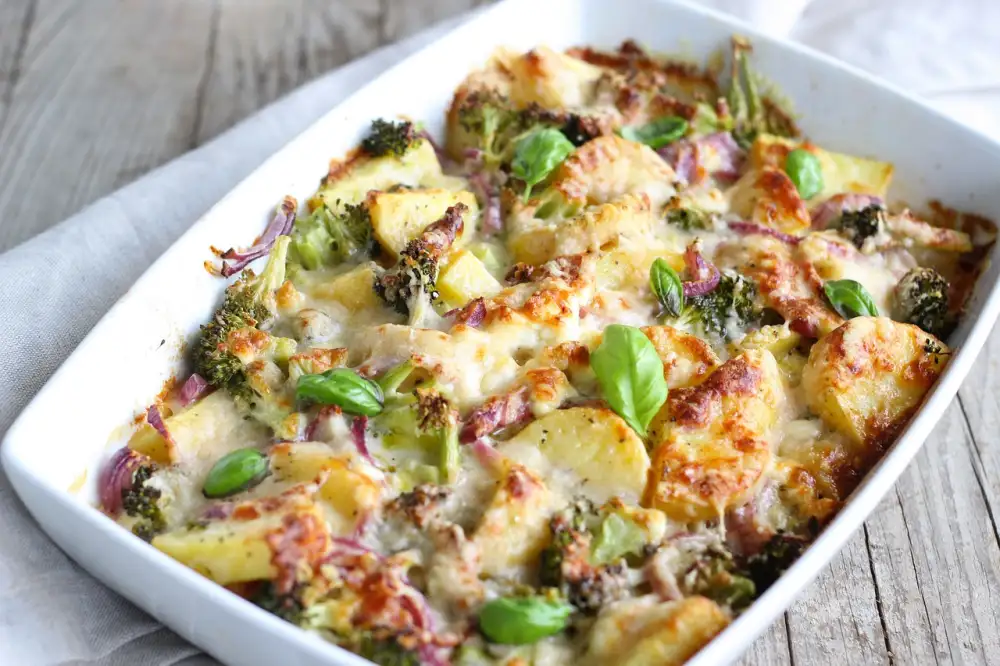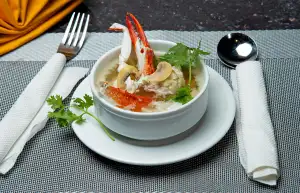Unraveling the Mystery: Discovering the Delights of Casseroles

- Definition of a Casserole
- History and Origins of Casseroles
- Key Features of Casseroles
- Popular Types of Casseroles
- Ingredients Used in Casseroles
- Preparation and Cooking Methods for Casseroles
- Tips for Making Delicious Casseroles
- Health Benefits of Casseroles
- Serving and Pairing Suggestions for Casseroles
Casseroles have long been a beloved dish in many cultures around the world. These hearty and flavorful one-pot wonders have stood the test of time, captivating taste buds with their comforting and satisfying nature. Whether you're a seasoned cook or a novice in the kitchen, casseroles offer a versatile and convenient way to create delicious meals that are sure to please everyone at the table. In this article, we will unravel the mystery behind casseroles and explore the delightful world they have to offer. Get ready to embark on a culinary journey where tradition meets modernity in food!
Definition of a Casserole
A casserole is a versatile and comforting dish that has been enjoyed by countless generations. But what exactly is a casserole? In simple terms, a casserole refers to a one-pot meal that is cooked slowly in the oven. It typically consists of layers of ingredients such as meat, vegetables, starches, and sauces, all baked together until they meld into a harmonious and flavorful dish. The beauty of a casserole lies in its simplicity and ability to bring together various flavors and textures in one delicious ensemble. Whether it's a hearty meat-based casserole or a vegetarian delight, this culinary creation never fails to satisfy our taste buds.
History and Origins of Casseroles
Casseroles have a rich history that dates back centuries. The term "casserole" originated from the French word "casse," which means a large, deep dish. Casseroles were initially created as a way to cook and serve food in one vessel, making them convenient for busy households.
The concept of cooking food in a covered dish can be traced back to ancient civilizations such as the Romans and Greeks, who used clay pots to slow-cook their meals. However, it was in the Middle Ages that casseroles truly began to take shape.
During this time, cooks would layer ingredients such as meat, vegetables, and grains in a pot and then cover it with a lid or pastry crust. This method allowed for slow cooking over an open fire or in an oven, resulting in tender and flavorful dishes.
Casseroles gained popularity during the 18th and 19th centuries when they became a staple of American cuisine. Immigrants brought their own versions of casseroles from Europe, incorporating local ingredients and flavors.
In the early 20th century, casseroles became even more prevalent with the introduction of canned soups and processed foods. These convenience items made it easier for home cooks to assemble quick and tasty casseroles using pre-made sauces or fillings.
Today, casseroles continue to evolve with new ingredients and techniques being incorporated into traditional recipes. They have become synonymous with comfort food and are enjoyed by people all around the world.
The history of casseroles showcases their versatility and adaptability throughout different cultures and time periods. From humble beginnings to modern-day favorites, casseroles remain a beloved dish that brings families together around the dinner table.
Key Features of Casseroles
Casseroles are known for their unique characteristics that set them apart from other dishes. Here are some key features of casseroles:
1. One-Pot Wonder: Casseroles are typically prepared in a single dish, making them convenient and easy to clean up after cooking.
2. Versatility: Casseroles can be made with a wide variety of ingredients, allowing for endless flavor combinations and customization.
3. Layered Goodness: Casseroles often consist of layers of ingredients, such as meat, vegetables, cheese, and sauce, creating a harmonious blend of flavors and textures.
4. Baked to Perfection: Casseroles are usually baked in the oven, resulting in a golden crust on top and tender goodness underneath.
5. Comfort Food Appeal: Casseroles are often associated with comfort food due to their hearty nature and ability to warm both body and soul.
These key features make casseroles an enticing option for home cooks looking to create delicious and satisfying meals with minimal effort.
Popular Types of Casseroles
Casseroles come in a wide variety of flavors and ingredients, making them a versatile dish that can suit any taste. Here are some popular types of casseroles:
1. Chicken and Rice Casserole: This classic casserole combines tender chicken pieces with fluffy rice, vegetables, and a creamy sauce for a comforting meal.
2. Tuna Noodle Casserole: Made with canned tuna, egg noodles, peas, and a creamy mushroom sauce, this casserole is a favorite among seafood lovers.
3. Shepherd's Pie: A traditional British casserole made with ground meat (usually lamb or beef), mashed potatoes, and vegetables, baked to perfection.
4. Mexican Enchilada Casserole: Layers of tortillas, seasoned ground beef or chicken, cheese, and enchilada sauce create a flavorful and spicy dish.
5. Vegetarian Quinoa Casserole: Packed with nutritious ingredients like quinoa, vegetables, beans, and cheese, this casserole is perfect for vegetarians or those looking for a healthy option.
6. Breakfast Casserole: A hearty morning meal made with eggs, sausage or bacon, cheese, and bread or hash browns - perfect for feeding a crowd during brunch gatherings.
These are just a few examples of the many types of casseroles you can explore. The possibilities are endless when it comes to combining different ingredients to create delicious one-dish wonders.
Ingredients Used in Casseroles
When it comes to the ingredients used in casseroles, the possibilities are endless. The beauty of casseroles lies in their versatility, allowing you to experiment with a wide range of flavors and textures. Common ingredients include protein sources such as chicken, beef, or seafood, along with vegetables like carrots, peas, and bell peppers. To add depth and richness to the dish, cheese and creamy sauces are often incorporated. Additionally, herbs and spices like garlic, thyme, and paprika can be used to enhance the overall taste. With such a diverse array of ingredients at your disposal, you can create a casserole that suits your personal preferences and dietary needs.
Preparation and Cooking Methods for Casseroles
Casseroles are known for their simplicity and ease of preparation. The first step in making a delicious casserole is to gather all the necessary ingredients. This typically includes a protein such as chicken, beef, or fish, along with vegetables, grains, and a flavorful sauce or broth.
Once the ingredients are ready, the next step is to assemble them in a baking dish or casserole dish. Layering the ingredients ensures that each bite is packed with flavor. It's important to evenly distribute the ingredients to ensure even cooking.
After assembling the casserole, it's time to cook it. There are several methods you can use depending on your preference and available equipment. The most common methods include baking in an oven, slow cooking in a crockpot or slow cooker, or even cooking on the stovetop.
Baking casseroles in the oven is perhaps the most popular method. Preheat your oven to the recommended temperature and place the casserole dish inside. The cooking time will vary depending on the recipe and ingredients used. It's essential to follow the recipe instructions closely to achieve optimal results.
Slow cooking casseroles in a crockpot or slow cooker is another convenient option. Simply add all the ingredients to the pot, set it on low heat, and let it cook for several hours. This method allows for tender meat and well-developed flavors.
For those who prefer stovetop cooking, choose a large pot with a lid that can accommodate all your ingredients. Cook over low heat for an extended period while stirring occasionally to prevent sticking.
Regardless of which method you choose, it's important to monitor your casserole during cooking. Check for doneness by inserting a fork into the meat or testing if vegetables are tender.
In conclusion, there are various preparation and cooking methods for casseroles including baking in an oven, slow cooking in a crockpot, or cooking on the stovetop. Each method offers its own unique advantages and can result in a delicious and satisfying meal. Experiment with different techniques to find your favorite way of preparing casseroles.
Tips for Making Delicious Casseroles
1. Choose the right dish: Use a deep, oven-safe casserole dish that allows for even heat distribution and easy serving.
2. Layer ingredients properly: Start with a base layer of starches or grains, followed by proteins and vegetables. Top with cheese or breadcrumbs for added flavor and texture.
3. Don't skimp on seasoning: Casseroles can be bland if not properly seasoned. Be generous with herbs, spices, and condiments to enhance the flavors.
4. Experiment with different cheeses: Cheese adds richness to casseroles. Try using a combination of sharp cheddar, mozzarella, or Parmesan for a delicious twist.
5. Add a crunchy topping: For an extra layer of texture, sprinkle crushed crackers or toasted breadcrumbs on top before baking.
6. Consider pre-cooking certain ingredients: Some vegetables like potatoes or carrots may take longer to cook than others. Pre-cook them slightly before adding them to the casserole for even cooking.
7. Use homemade stocks or broths: Homemade stocks add depth and richness to casseroles. If you don't have time to make your own, choose high-quality store-bought options.
8. Allow for resting time: After removing the casserole from the oven, let it rest for a few minutes before serving. This allows the flavors to meld together and makes it easier to cut into portions.
9. Garnish with fresh herbs: Adding a sprinkle of fresh herbs like parsley or basil just before serving adds brightness and freshness to your casserole.
10. Get creative with leftovers: Casseroles are great for using up leftovers! Don't be afraid to experiment by incorporating leftover roasted meats or vegetables into your next casserole creation.
By following these tips, you'll be well on your way to creating delicious and satisfying casseroles that will delight your taste buds and impress your family and friends.
Health Benefits of Casseroles
Casseroles not only tantalize our taste buds but also offer numerous health benefits. Packed with a variety of ingredients, they provide a balanced meal in one dish. Vegetables like carrots, broccoli, and bell peppers add essential vitamins and minerals to casseroles, promoting overall well-being. The inclusion of lean proteins such as chicken or fish helps build and repair muscles. Whole grains like brown rice or quinoa contribute fiber for improved digestion. By controlling the amount of oil and cheese used, casseroles can be a healthier alternative to fried or greasy dishes. With their nutrient-rich composition, casseroles make it easier to maintain a healthy lifestyle without compromising on flavor.
Serving and Pairing Suggestions for Casseroles
Casseroles are incredibly versatile dishes that can be enjoyed on their own or paired with various accompaniments. Here are some serving and pairing suggestions to enhance your casserole experience.
1. Serve as a Main Course: Casseroles can be the star of your meal when served as a main course. Pair them with a fresh salad or steamed vegetables to add a healthy touch to your plate.
2. Bread and Grains: Serve casseroles alongside crusty bread, such as baguettes or dinner rolls, to soak up the delicious flavors. Alternatively, pair them with rice, quinoa, or couscous for a heartier meal.
3. Side Dishes: Complement your casserole with side dishes that complement its flavors. For example, if you're serving a Mexican-inspired casserole, consider adding guacamole, salsa, or sour cream on the side.
4. Cheese Toppings: Many casseroles benefit from a generous sprinkle of cheese on top before baking. Experiment with different types of cheese like cheddar, mozzarella, or Parmesan to add an extra layer of richness.
5. Fresh Herbs: Garnish your casserole with fresh herbs like parsley, basil, or cilantro to add brightness and freshness to the dish.
6. Wine Pairings: Depending on the flavors in your casserole, consider pairing it with a suitable wine. For example, a rich beef casserole may pair well with a bold red wine like Cabernet Sauvignon.
Remember that personal preferences play an important role in serving and pairing suggestions for casseroles. Feel free to experiment and find combinations that suit your taste buds best!
In conclusion, casseroles are a versatile and delicious dish that has stood the test of time. From their humble origins to their modern adaptations, casseroles have become a staple in many cuisines around the world. With their ability to bring together different flavors and ingredients, casseroles offer endless possibilities for creativity in the kitchen. Whether you prefer a classic comfort food casserole or a more adventurous fusion dish, there is something for everyone to enjoy. So next time you're looking for a hearty and satisfying meal, don't forget to embrace the versatility of casseroles and let your culinary imagination run wild!
Published: 08. 12. 2023
Category: Food



